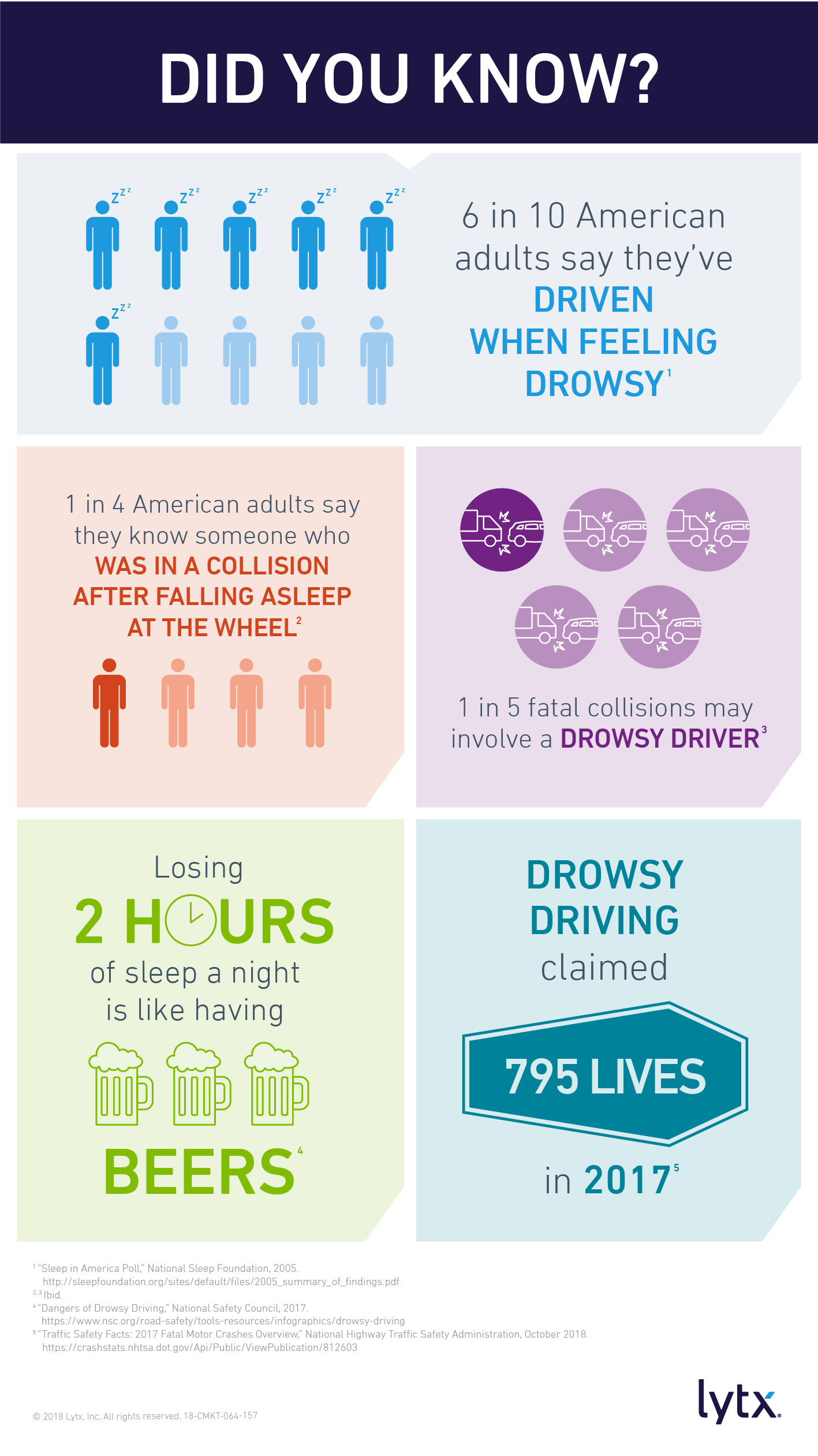Drowsy Driving Prevention
As National Drowsy Driving Prevention Week is finishing up, there’s reason to hope that the nation’s years-long campaign to combat drowsy driving has had some effect.
The National Highway Traffic Safety Administration in October reported that the number of road fatalities in the U.S. involving a drowsy driver fell below 800 for the first time in seven years. In 2017, NHTSA counted 795 fatal collisions linked to drowsy driving. That’s down from 803 deaths in 2016 and 824 in 2015. While the differences might be small, every life counts, which is why major organizations, from health and safety advocates to law enforcement and government agencies, continue to spread the word about the perils of driving while drowsy.
Facts about drowsy driving
- 6 in 10 American adults say they’ve driven when feeling drowsy
- 1 in 4 American adults say they know someone who was in a collision after falling asleep at the wheel
- Losing 2 hours of sleep a night is like having 3 beers
- 1 in 5 fatal collisions may involve a drowsy driver
- Drowsy driving claimed 795 lives in 2017
Commercial vehicle drivers are among the groups considered most at risk for drowsy driving. As many as 28 percent of truck drivers have mild to severe sleep apnea, according to a study conducted by the University of Pennsylvania and sponsored by the Federal Motor Carrier Safety Administration (FMCSA) and the American Transportation Research Institute of the American Trucking Associations.
Prevent drowsy driving
Combat Fatigue With These Four Expert Tips
1. Get enough sleep
How much is enough sleep? The National Sleep Foundation has issued these recommendations by age. But each person is different. NASCAR driver Kurt Busch averages seven to eight hours. NBA player LeBron James sleeps 12 hours a night. NFL wide receiver Larry Fitzgerald gets nine hours, but likes to bump it up to 10 or 11 hours the night before a game. Professional drivers also need sufficient sleep to perform. Sleep specialist Dr. Meier H. Kryger sums it up by saying, “It is the amount of sleep that leaves you wide-awake, alert, in a great mood, and functioning at your best.”
2. Take a nap
The Federal Motor Carrier Safety Administration recommends that commercial drivers take a 10- to 45-minute nap if they feel drowsy, then allow 15 minutes to fully wake up afterwards. Even if you don’t yet feel sleepy, a nap can help prevent fatigue later on. Also naps are more effective than caffeine.
3. Find out which medications can induce drowsiness
Many painkillers, muscle relaxants, antihistamines, antidepressants, blood pressure medications, and even cold medicines can make you feel drowsy. Find out which ones have the potential to make you feel tired and consult with your doctor for alternatives.
4. Practice good “sleep hygiene”
Sleep researchers have come up with a list of conditions for a good night’s sleep. Here’s a list of good sleep habits from the Centers for Disease Control:
- Be consistent with your sleep schedule
- Keep your sleep area quiet, dark and relaxing
- Avoid electronics with screens
- Cut off caffeine earlier in the day
- Don’t eat a big meal right before bedtime
- Take a brisk walk, stretch or exercise during the day

